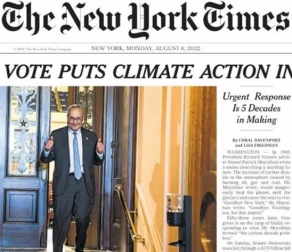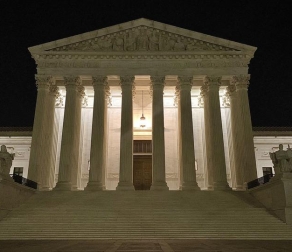As part of my January newsletter “Monthly Musings on American Healthcare,” I sought opinions on this topic: America’s opioid epidemic. The results were published in the February issue and appear below. To receive future newsletters via email, please subscribe here.
Please answer both questions:
Which group is MOST responsible for America's opioid epidemic?
- Drug manufacturers (38%, 60 Votes)
- Opioid users (28%, 43 Votes)
- Doctors (19%, 30 Votes)
- Elected officials (10%, 15 Votes)
- Distributors (5%, 8 Votes)
Total Voters: 156
Should one or more of these groups be held LEGALLY accountable for the deaths caused by opioid addiction?
- Yes (61%, 82 Votes)
- No (22%, 29 Votes)
- Not sure (17%, 23 Votes)
Total Voters: 134
Dr. Robert Pearl is the former CEO of The Permanente Medical Group, the nation’s largest physician group. He’s the bestselling author of “Mistreated: Why We Think We’re Getting Good Health Care–And Why We’re Usually Wrong” and a Stanford University professor. Follow him on Twitter @RobertPearlMD.









Looking at the opioid crisis through the eyes of an epidemiologist one should ask, “What can be learned by the demographics and other characteristics of opioid users/abusers?”
What does it mean if men are more susceptible than women? What does it mean that some areas of the country are more affected than others? What can we learn from the social/ethnic/economic characteristics of users?
Not to exonerate the responsible, I don’t believe that any of the insights gleaned from examining these questions will lend themselves to a simple finger pointing exercise.
The greatest stimulus to opioid prescribing came with the concept of pain as the fifth vital sign. This concept was accepted by many as a standard of the quality of care. The Medical Board made public its efforts to punish physicians who did not control pain adequately. Rank and file physicians quickly fell into line. The rest is history.
There is no clear answer for treating such addiction, but we must restrict prescriptions of opioids to small quantities, unless prescribed by pain specialists.
I agree with the gentleman who described physicians falling in line under pressure from the medical boards. I assume the medical boards are primarily physician run. Somehow from the very FIRST day the patient is prescribed an opioid they have to be given the education surrounding the transient nature of their use and the MANY pitfalls of prolonged use. Providers need TIME to educate and closely follow patients given opioids. Healthcare systems can initiate guidelines to make this easier. It should be included the day of the preop exam or even better the day the surgeon and the patient decide an operation is the best treatment plan. It should be included the very first day the provider decides to offer opiates to a patient in pain. I think we all can agree that we fall short of this ideal and much work can be done in this area.
I agree with the comments of the epidemiologist. This does not often play a prominent role in the discussion of this problem. The “social/ethnic/economic characteristics” he mentions are setting the foundation for the opioid problem to occur at a widespread level. I also echo that this is not to say that all of the aforementioned enablers should be left off the hook, but the opioid use is mostly a symptom of the disease, not the disease itself.
I agree that the epidemic was fueled by the concept of pain as the fifth vital sign. In my professional career, I have seen my local emergency room transition from a place where narcotics were not given until the specialist had examined the patient who might have appendicitis to a place where Dilaudid is routinely given, almost as soon as a patient arrives. Not morphine, Dilaudid. much more powerful. I was legally required to attend a class on how to prescribe opioids for my patients with chronic pain at which it was explained to me that it was necessary to maintain many chronic pain patients on opioids and that that was the correct thing to do. I asked about the effect of opioid use on driving a car and was told “there is no data but we think when patients have become accustomed to a chronic blood level of opioids that they’re safe behind the wheel.” It is certainly true that there were patients who are addicted before that, and many physicians who overprescribed opioids, but the idea of pain as the fifth vital sign definitely made the whole situation much worse. I resisted this, owing to background that I have in addiction medicine which we many of my colleagues lack. However, I felt like a lone voice crying in the wilderness. It’s hard to choose one group that is responsible for this epidemic, however I would say that it is a combination of Doctors not being responsible to prescribe in limited quantities and the elected officials and medical board making pain the fifth vital sign. Many of my colleagues prescribe overly large quantities of opioids to patients after surgeries so that they will not receive calls in the night or have to handle extra office visits for those few patients who need additional amounts beyond the average. To me, this is poor medicine. In addition, we have always had problems providing adequate rehabilitation services for those patients are falling into addiction, whether to legal or illegal substances. I am glad to see attention focusing on this problem and hope that we can develop an adequate healthcare system nationwide to manage it.
Opioid RX’s have actually decreased in the last few years even as deaths went up – people shifted from RX to heroin. Although 1 in 4 Americans are given an RX every year only a very tiny % of chronic pain patients become addicts so that isn’t the driver. Most of the abuse of RX’s happens by kids stealing other people’s RX so cutting down the over-supply will help. 70% of those who abuse opioids never had their own rX and of those that did only 5% are people who doctor shop
It is common to blame pharma or over-prescribing but abuse patterns are very closely tied to economic conditions not to health problems, people are basically self-medicating emotional and economic problems.
It can be difficult to identify who is exactly responsible for the opioid crisis or whether or not there is anyone responsible for it at all.